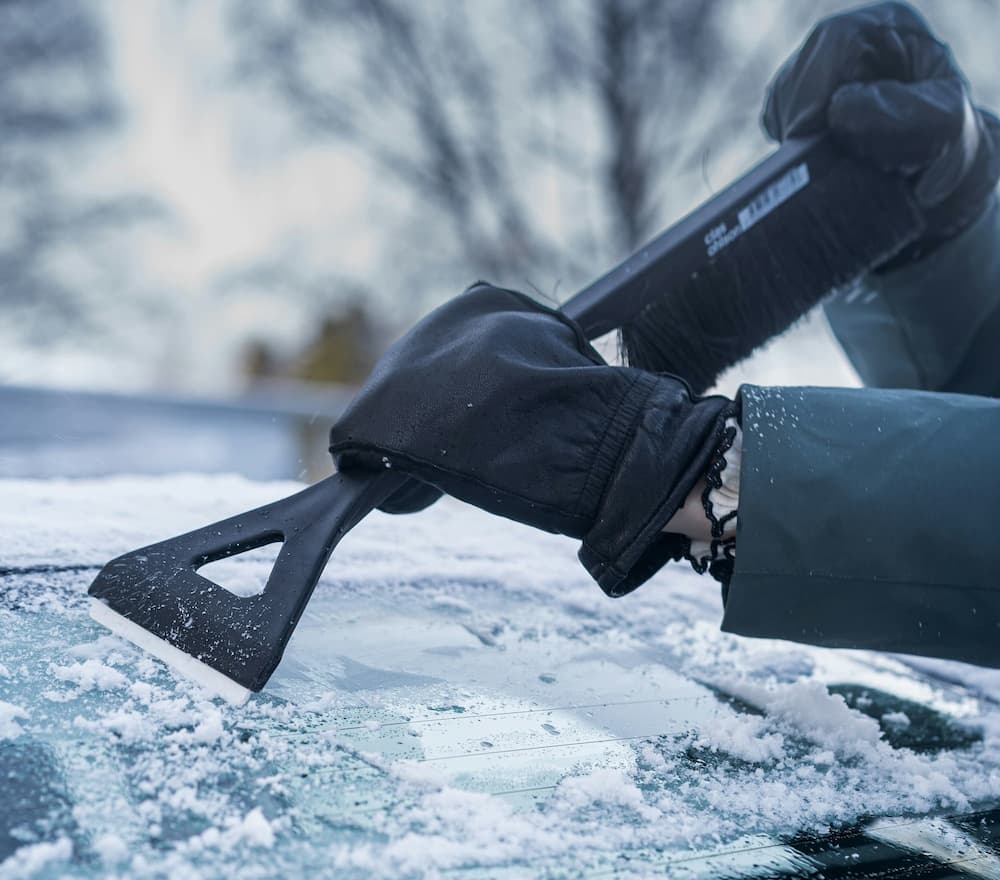Winter mornings often lead to a frozen windshield, which can delay a quick commute. Safe methods to clear frost prevent glass damage and maintain clear visibility for safer driving. This guide includes proven techniques, common errors, and prevention advice to simplify de-icing.
Why patience matters when de-icing
Rushing the process risks scratches, cracks, or streaks on the windshield. Ice builds up unevenly, and aggressive removal stresses the glass. Allowing time for heat or solutions to act ensures complete clearance without harm. This approach extends vehicle lifespan and reduces repair costs.
Preparing your car before winter hits
Gather key items in advance: a durable plastic ice scraper, automotive de-icer spray, and washer fluid rated for -20°C or below. Inspect wiper blades for damage and test the defroster. Apply a water-repellent glass treatment during autumn to limit ice bonding. Such preparation makes de-icing the windshield much easier in cold conditions.
5 proven methods to safely remove ice from your windshield

The following techniques remove ice buildup effectively and without damage.
Method 1: Ice scraper technique
Select a plastic scraper with a flexible edge. Begin at the top and apply steady downward pressure in straight paths. Avoid circular scraping to prevent marks. Pair this with the vehicle defroster set to maximum for quicker results. This method works well for heavy ice layers.
Method 2: De-icer spray
Apply an automotive de-icer spray evenly over the surface. Wait one to two minutes for melting to occur. Remove residue using a microfibre cloth. This option provides a fast way to58 clear frost on lighter coverings.
Method 3: Remote start warmup
Vehicles equipped with remote start should activate it five to ten minutes ahead, with defroster engaged. Internal engine heat softens ice gradually. This approach offers a simple, contact-free solution for busy schedules.
Method 4: Rubbing alcohol solution
Combine two parts 70% isopropyl alcohol with one part water in a spray bottle. Distribute the mixture generously and observe rapid dissolution. Household ingredients make this a practical quick fix for frost removal.
Method 5: Windshield cover prevention
Fit a cover over the glass the previous evening. Lift it off in the morning for an unobstructed view. This step avoids scraping on many frosty occasions.
Critical mistakes that damage your windshield
Boiling water should never be used, as it triggers thermal shock and cracking. Metal tools or improvised scrapers on thick ice cause scratches. Forceful chipping pits the surface. Incomplete removal creates visibility hazards and unsafe conditions.
Pro windshield de-icing tips and alternative solutions
Target persistent areas with lukewarm water from a spray bottle once the defroster runs. Park facing east so morning sun helps defrost the glass. When carrying pets or children, protect your car interior from salt and snow in winter to contain tracked debris—EVA car mats hold moisture securely.
Long-term prevention strategies
Choose year-round washer fluid and sheltered parking when available. Use ceramic coatings to ease ice detachment. Clean the windshield routinely to reduce buildup that causes freezing. Consistent habits decrease the need to remove ice from the windshield.
FAQ: Your de-icing questions answered
How long should a car warm up before driving in freezing weather?
Modern vehicles require 30-60 seconds for fluid circulation. Complete glass clearance remains essential for safety.
At what temperature does windshield washer fluid freeze?
Standard types freeze at 0°C. Winter formulations resist down to -20°C or -40°C.
Can hot water melt ice on a windshield?
No, due to crack risk from sudden temperature change. Lukewarm water serves as a safer alternative.
What alternatives exist without an ice scraper?
Options include a plastic card, CD case, or spray of 2/3 isopropyl alcohol mixed with 1/3 water.
Is de-icer spray safe for windshields and paint?
Automotive versions are safe. Household chemicals or salt must be avoided.
Do windshield covers work, and which type performs best?
Effectiveness reaches 90% or more. Magnetic or side-secured models provide optimal results.
Can frozen wipers damage a windshield?
Yes, leading to scratches or cracks. Always thaw them before activating.
Will immediate defroster use crack the windshield?
No, absent prior damage. Contemporary glass tolerates such shifts.
How to de-ice a windshield if the car fails to start?
Apply a manual scraper and alcohol mix, followed by battery troubleshooting.
Does repeated de-icing harm coatings or tints?
Proper methods cause no issues. Metal tools and abrasives require avoidance.
Conclusion
Effective techniques for getting ice off a car window save effort and safeguard the vehicle. Pair these steps with ongoing prevention for smoother winter routines. Consider protecting your car’s interior with all-weather floor mats to manage melted water. Preparation ensures clear and safe driving.

